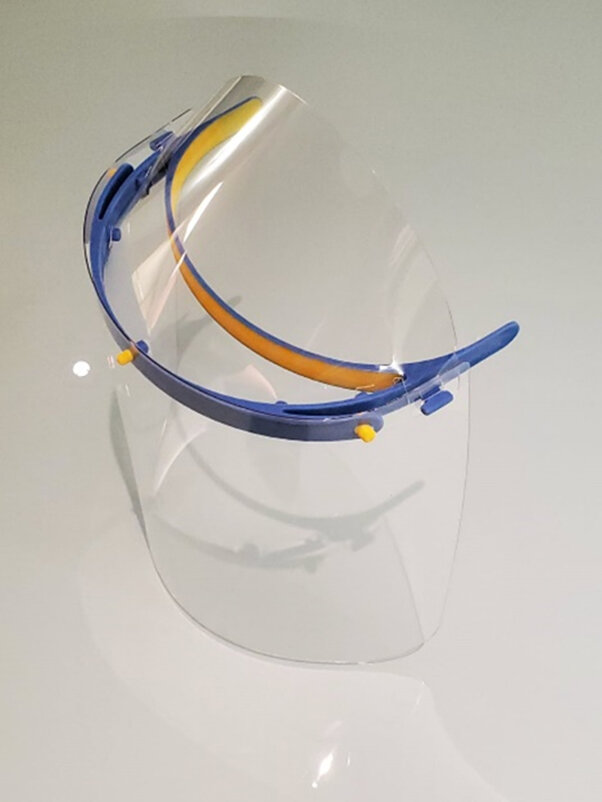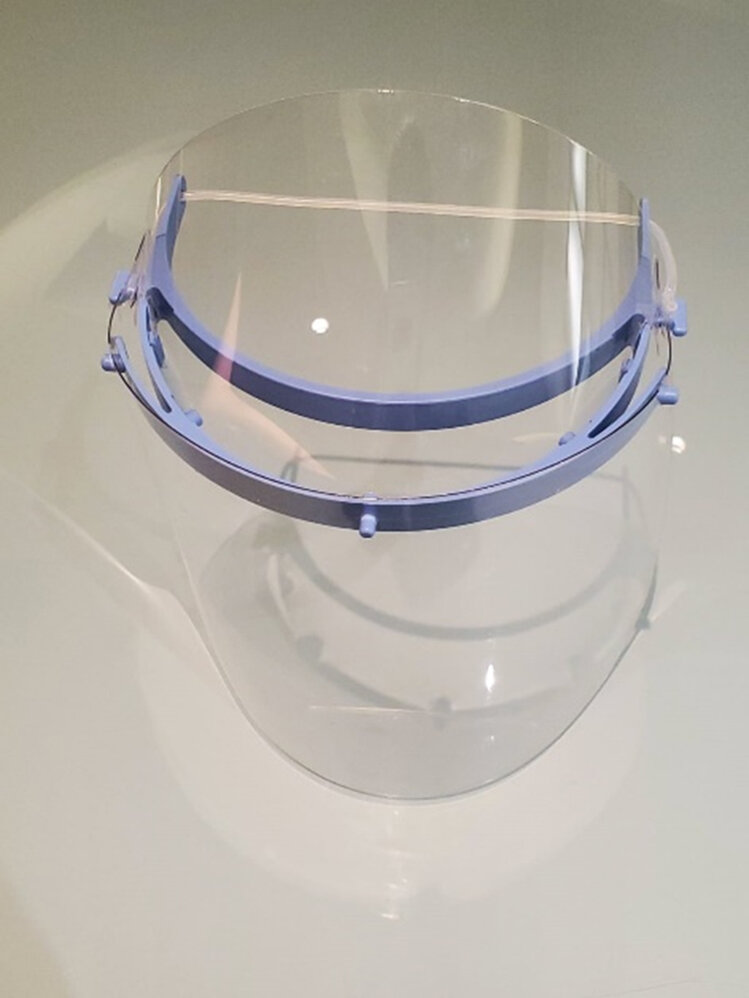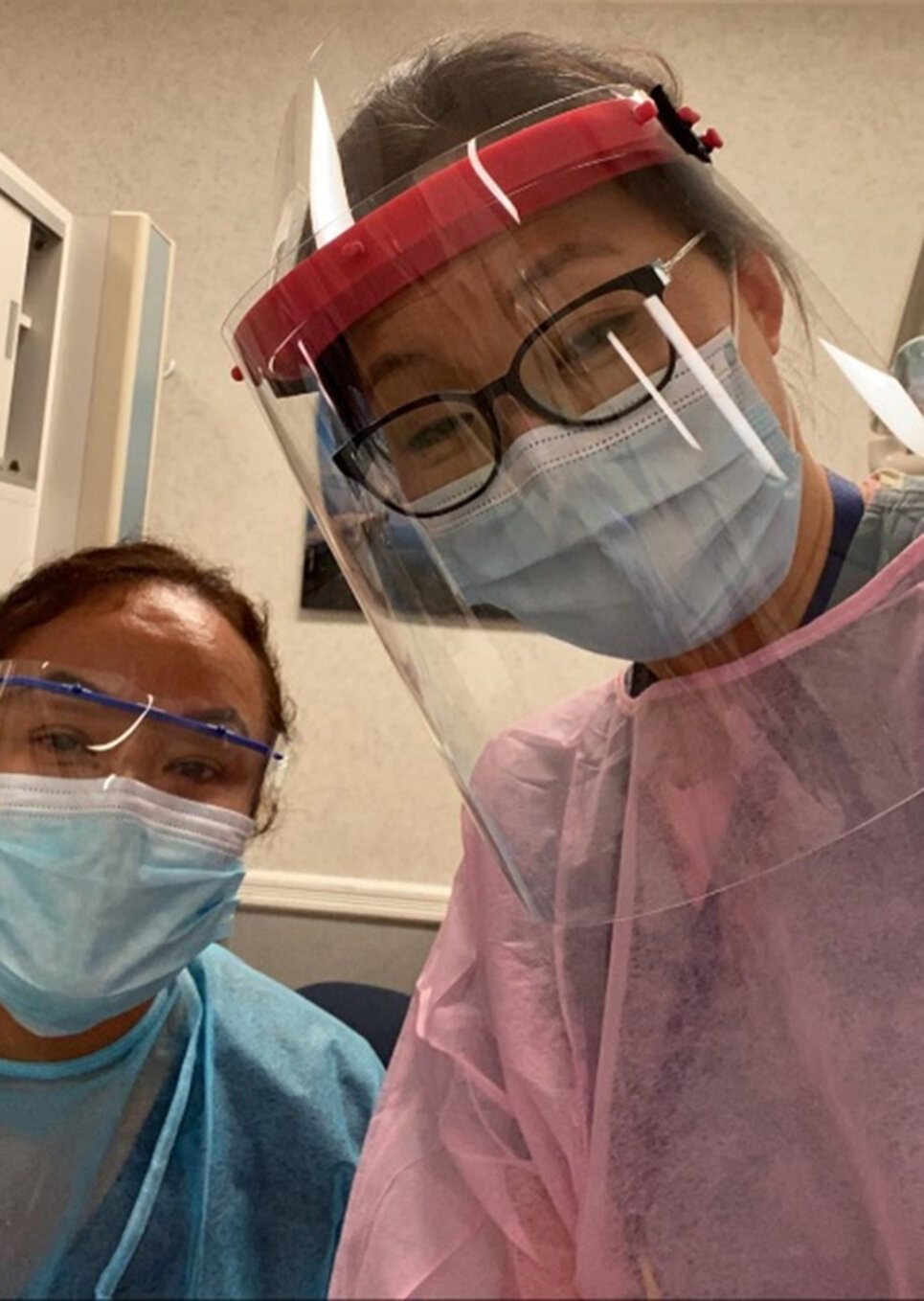Breaking News: see the latest press release from UCLA on face shields.
Face shields protect users’ facial tissues, and possibly prolong the useful lives of PPEs such as goggles and N95 masks by creating a robust physical barrier. Research shows that there is a 96% reduction in risk of inhaling microparticles when using a face shield at a distance of 18 inches. These significant benefits are especially critical for medical professionals treating COVID-19 patients. Thus, there is an urgent need to provide this potentially life-saving PPE to healthcare professionals nationwide.
Face shields are usually made from a clear plastic (such as polycarbonate, acetate, and polyethylene terephthalate glycol) and cover the entire face with a plastic visor attachment that wraps around the individual’s head to secure the shield in place. Besides protecting the face from aerosols and droplets, these shields must also minimize access between the forehead and the clear shield. To support long term wear, the shield must be comfortable, lightweight, and easily disinfected with most hospital grade disinfectants.
Although this crisis has motivated an army of volunteers to design and 3D print mask components to alleviate the shortage, 3D printing alone is not adequate to address the immense need in a short time. Our team sought to design a face shield that provides best-in-class protection, can be made in large volume by highly scalable injection molding, and with the consistently high quality that meets the rigorous standards in terms of infection control, functionality, logistics and liability.
Manufacturing PPEs at such high volume also requires the team to overcome the global supply chain shortage of raw materials for clear plastic sheets. The team collaborated with industry partners from defense and medical device industries to leverage their network to secure adequate raw materials. The handoff is completed by working closely with medical device manufacturers willing to provide the service at cost, using FDA certified manufacturing facilities.
Status: 1 version approved for 3D Printing, 2 versions Approved for mass manufacturing. All 3 currently in use.
Face shield team
Jacob Schmidt, PhD
Bioengineering, UCLA
Yun Chang Lee, PhD
Bioengineering, UCLA
Doug Daniels
UCLA Library Data Science Center
Chase Linsley, PhD
Bioengineering, UCLA
Yulong Zhang, PhD
Dentistry, UCLA
Andrew Charles, MD
Neurology, UCLA
Mark Roden, PhD
Ticketmaster Data Science
Claire Hsu, PhD
Mechanical and Aerospace Engineering, UCLA
Guido Faas, PhD
UCLA Neurology



















